NEAR Protocol: The Long Term Value Proposition

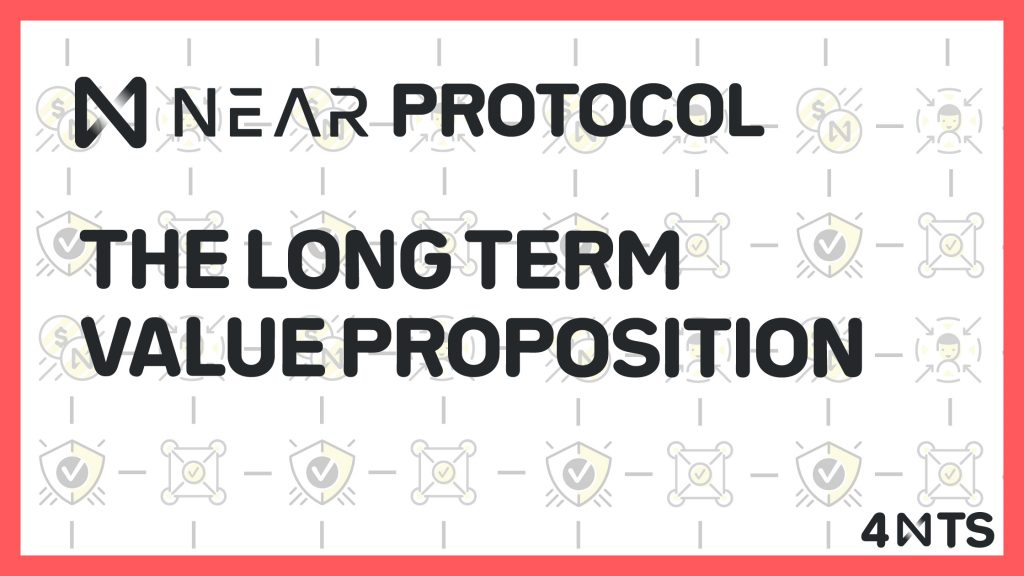
General disclaimer: None of the following should be considered financial or investment advice – please consult a financial professional before engaging in investment related activities.
This is a report for anyone interested in NEAR and the long-term value proposition provided by the NEAR Ecosystem. The goal of this report is to put in context the significance of NEAR protocol and to explain why it is uniquely positioned to thrive in the coming years. A general two-page summary of this argument can be found here.
Table of Contents:
Section 1: Context
Section 2: Funding and Team
Section 3: Proof of Stake
Section 4: Building On Top of NEAR
Section 5: Token Functionality:
Section 6: Conclusion
Section 1: Context
The best place to begin discussing NEAR, is the general environment it is launching within. NEAR has been building its platform for the past two years as the cryptocurrency market has consolidated and blockchain has continued to become more familiar to both businesses and individuals. NEAR is a third generation blockchain project: it originally launched towards the end of the last crypto bull market in 2018, and is now publicly launching on the brink of what is expected to be the next crypto bull market.
NEAR is a blockchain ecosystem that provides similar services to that of Ethereum, Cosmos, Solana, and Polkadot: A fully decentralized cloud platform for quickly building and scaling decentralized applications. In context, however, NEAR is challenging these existing blockchain protocols with its unique technical design: Nightshade. The Nightshade algorithm is used for dynamic sharding, and implementing other developer and user friendly features for managing accounts and building applications.
NEAR is one of the first projects building the Internet of Value, but with a lot of the tools and interfaces from the Internet of Information. It is bridging the gap between new digital models of governance, value, and decentralization, with familiar management interfaces that we normally use on Facebook and Google. NEAR is appealing to the next generation of entrepreneurs and developers – who grew up during the rise of the internet, and are now looking for a new frontier – The Open Web.
The context of the Open Web is strongly linked to two separate processes: 1) The Rise of Surveillance Capitalism and 2) The Fourth Industrial Revolution.
Shoshana Zuboff wrote The Age of Surveillance Capitalism in 2017, as an epic description of how centralized tech companies have monopolized the internet, collected data for their own financial profit, and created environments of dependency between users and companies that are exploitative and addictive.
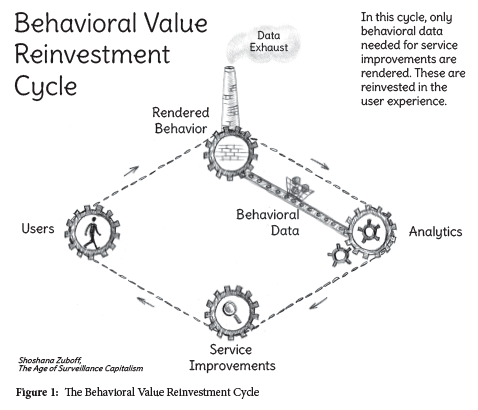
In tandem, Shaping The Fourth Industrial Revolution by Klaus Schwab was written as a vision of the largest industrial revolution since the first Industrial Revolution in the late 18th century. Its premise is that the digital, physical, and biological domains will be increasingly interconnected with new technologies, platforms and value-models sprouting around this innovation. The integration of technologies like Artificial Intelligence, the Internet of Things, Nanotechnology, and Blockchain will create completely new business models and value propositions for both businesses and consumers.
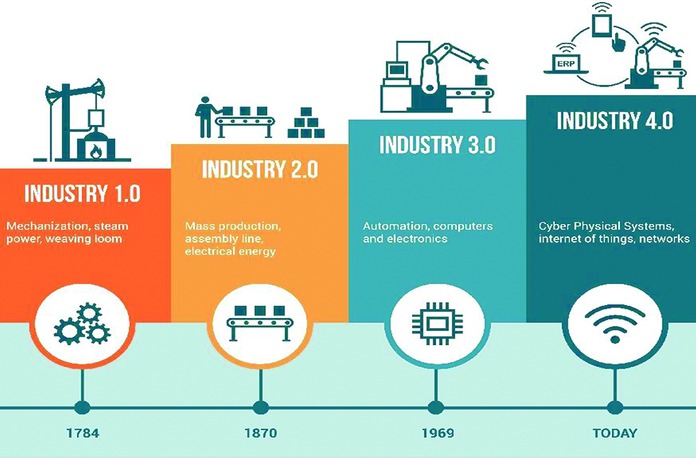
This is the context from which the full significance of NEAR protocol can be understood: NEAR is building a decentralized platform that not only holds the promise of creating a more equal, censorship resistant, and Open Web (in contrary to the woes of Surveillance Capitalism), but also one that is perfectly positioned to operate as a foundation for the largest industrial revolution in 200 years. This is a HUGE project with HUGE ambitions.
Main Takeaways from Section 1:
NEAR is a public permissionless blockchain ecosystem that incorporates dynamic sharding via the Nightshade algorithm to scalably provide the foundation for decentralized applications and the Internet of Value.
NEAR is launching at a time when blockchain is maturing as a technology and becoming more familiar to businesses, entrepreneurs, and enterprises.
NEAR is a HUGE project that is positioned to attract young talent disenchanted with surveillance capitalism, while also providing a scalable platform that can handle the opportunity and promise of the Fourth Industrial Revolution.
Section 2: Funding and Team
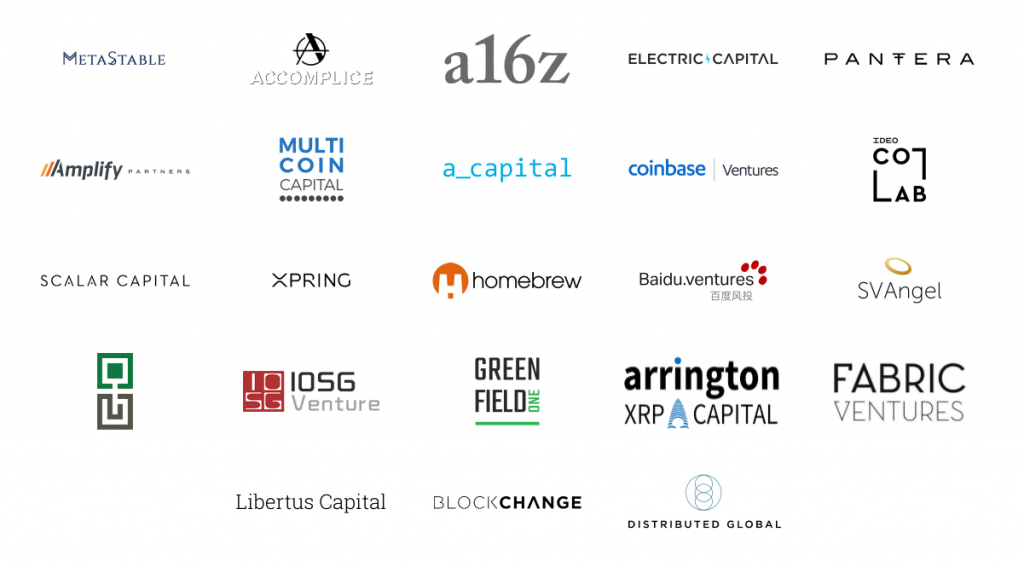
Everyone in Crypto will tell you to look at the team behind a project and to do your due diligence before thinking about investing in it or working with it. As such, it is important to understand the depth that accompanies the NEAR project and the NEAR team.
NEAR did a Series A funding round in July of 2019, and raised $12.1 million dollars. The 11 investors in this round included:
Pantera Capital
Electric Capital
Coinbase Ventures
Amplify Partners
IOSG Ventures
Xpring
Homebrew
Greenfield One
MetaStable Capital
Then, in April of 2020, a second round – this time in the form of a private token sale – launched, led by a16z also known as Andreessen Horowitz.This sale raised a total of $21.6 million dollars, with more than 40 other investment firms participating.
Finally, and most recently, in August of 2020, NEAR launched a public token sale to investors around the world (with certain country omissions due to legal reasons). This token sale concluded with $30 million dollars in commitments made to prospective token holders, from a pool of $152 million dollars in allocation requests.
In total, since July of 2019, NEAR has raised around $63.7 million dollars to launch the NEAR Ecosystem. Notably, this funding was from both traditional venture capital investment firms, as well as accredited crypto investors from around the globe.
A full list of backers can be found here.
Team:
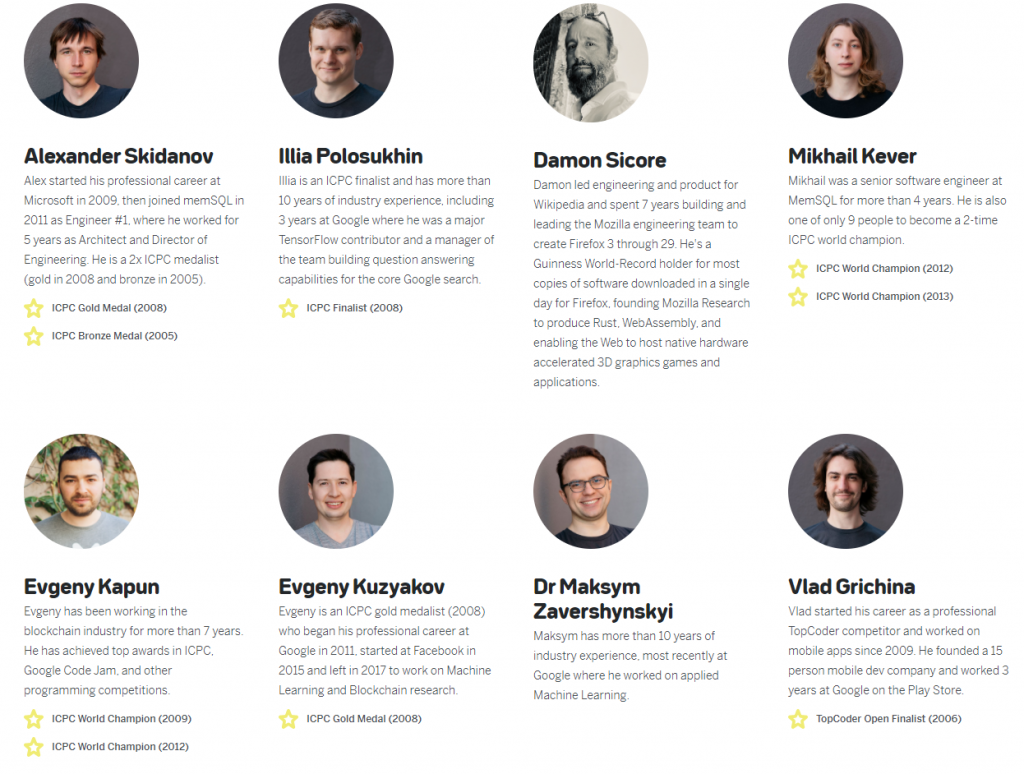
The NEAR website features a 40 person team. Here are some notable points:
Multiple Team Members are Finalists and Medalists of the International Collegiate Programming Contests (ICPC).
Previous experience ranges from Microsoft, to Google, to Wikipedia, to Mozilla, to Facebook.
The team boasts a number of silicon valley entrepreneurs as well as successful startup founders.
If you would like to learn more about the team jump on the NEAR Discord Channel, or follow their content on YouTube.
Main Takeaways from Section 2:
NEAR Protocol is funded by both private venture capital, as well as global crypto investors. Since 2019 they have raised close to $63.7 million dollars from more than 40 different firms and 1500 individual investors.
The NEAR Team is made up of 40 full time employees, many of whom are ICPC finalists and medalists. Experience from Facebook, Google, Wikipedia, Mozilla, Wall Street, and Silicon Valley is common among many of these members.
Section 3: Proof of Stake

NEAR describes itself as a “Sharded Proof of Stake Blockchain”. The exact design of the proof of stake consensus mechanism is known as Thresholded Proof of Stake. Generally, this means that validators are rewarded in proportion to the amount of NEAR that is staked through their seat on the network. In Very Plain Terms: NEAR validators and token holders can collaboratively secure the network in return for consistent and reliable coinbase rewards. That is to say, ‘passive income’ is earned for locking up NEAR tokens on the Network.
The significance of this feature is a key consideration in evaluating the long term value proposition of NEAR for an individual or firm: Token supply, while inflationary for the next five years, will be limited from circulation by the fact that many token holders will be locking up their NEAR on the network.
Token holders and validators have the opportunity to stake NEAR over the long term – from the very beginning, and earn consistent rewards, while also witnessing the massive growth of the ecosystem and interest in the project, as well as the many projects on top of NEAR. This growth is expected to appreciate the value of the NEAR token.
This means, very plainly, that NEAR can be expected to perform like many other Staking coins such as (XTZ), (EOS), (NEO), (ATOM), (VET), and, perhaps, (ETH 2.0): The design of the network is such that demand will increase as popularity of the network increases. This is because not only will more dApps and protocols be built on NEAR, but also more token holders will be looking to lock up their tokens on the network and earn a passive return on their investment. This is a pattern that many other PoS tokens have followed before.
Notably, the window of opportunity on PoS tokens narrows as time goes on and the network becomes more popular: Opening up a position in NEAR now, for example, has the benefit of appreciating with the growth of the Ecosystem over time, as opposed to opening up a position in two to three years. Playing the long-term game is crucial with Proof of Stake tokens.
Main Takeaways From Section 3:
NEAR Protocol operates according to a Thresholded Proof of Stake Consensus Mechanism, in which NEAR tokens are locked onto the Network through Network Validators.
As a Proof of Stake Token, NEAR will continue to be locked into the network over time, in spite of other token functions including storage, transactions, and trading.
In line with other Proof of Stake tokens, NEAR token holders can learn from other networks such as ATOM, XTZ, and EOS insofar as long-term hodling of a position is more beneficial in the long run as opposed to short term token flipping.
Section 4: Building on NEAR
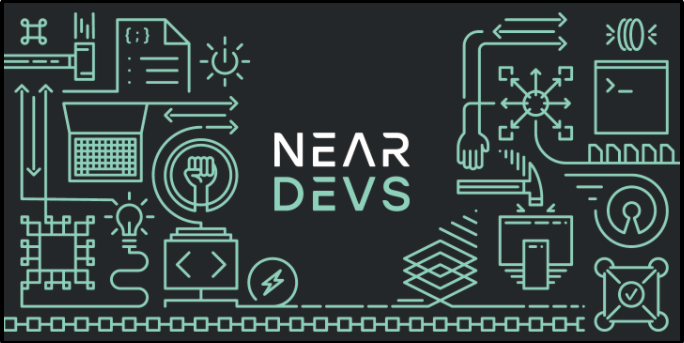
With an understanding so far of the context, team, and key value proposition to NEAR token holders, we can now look at the actual product offered by the NEAR Platform: An Ecosystem for Decentralized Applications. Decentralized applications have the potential to (1) Transform existing industries, while also (2) creating entirely new industries. .
Transforming Existing Industries: Enterprise Blockchain Adoption
For Enterprises, recent data strongly suggests changing attitudes towards blockchain adoption across industries. Here is what Deloitte’s 2020 Global Blockchain Survey finds on the importance of blockchain for companies around the globe:
“That’s the key takeaway from our 2020 Global Blockchain Survey, which finds that leaders no longer consider the technology groundbreaking and merely promising—they now see it as integral to organizational innovation.” (2)
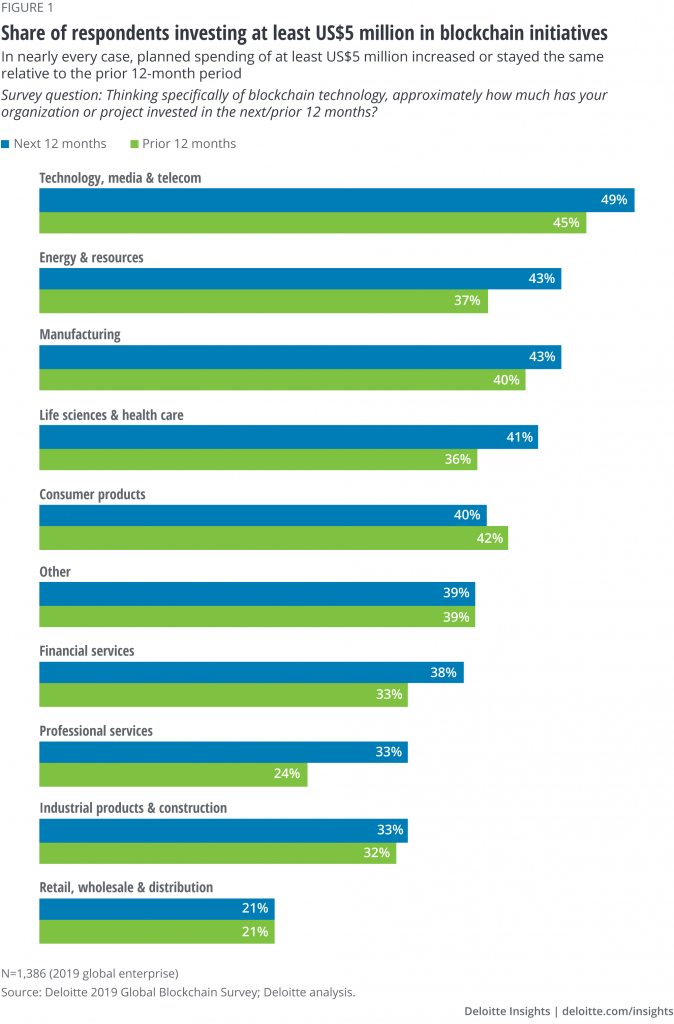
More specifically, the following diagram outlines where a platform like NEAR would integrate with existing industries across the global economy:
What this data indicates is that NEAR protocol – as a scalable, public, permissionless blockchain ecosystem – is ripe for adoption by any enterprise or entrepreneur interested in offering blockchain services. In context, PR Newswire estimates that the global blockchain market size for such industries will “reach USD 57,641.3 million by 2025, registering a CAGR of 69.4% from 2019 to 2025.”
Creating Entirely New Industries and Business Models:
Like other blockchain protocols, NEAR protocol has the capacity to offer entirely new decentralized services accompanied by their unique business models: From DeFi (Decentralized Finance), to Asset Management, the Tokenization of Products via Non-Fungible Tokens, as well as cryptocurrency based marketplaces for data.
These services are important, because all of these future projects, protocols, exchanges, and marketplaces are going to be built on NEAR: the NEAR token will ultimately operate as the base value for managing data across the system, and interfacing with other tokens and sources of value.
Existing projects already building on NEAR include (among others):
NEAR is Incredibly Developer Friendly:

Last but not least, the opportunities available for building on NEAR are numerous, and the team has done a solid job of providing developers with the opportunity to quickly and easily build apps using common programming languages like Rust and AssemblyScript.
Additionally, there are three specific features built into the design of NEAR that suggest it will be easier to not only use and build on top of, but also disseminate to the masses:
Senders Only Pay For Gas That is Used: In light of much talk about exploding Ethereum Gas Fees, NEAR resolves this problem quite nicely by only charging the user accounts for the amount of gas they use: In this manner any extra fee paid for gas is returned to the user.
Human Readable Account ID’s Take the Place of Hashes: When sending NEAR, it is simple and easy to designate a username (much like an email address). If the user does not exist NEAR cannot be sent. In this manner the platform is much more forgiving than other platforms where a wrong letter or number means lost funds forever.
User Friendly Technical Designs: This refers to the fact that (1) Developers can pre-pay gas for first time users so that first-time users do not need to worry about purchasing crypto per se. (2) Function-Call Limited Permission means that a new user can use a dApp or a contract on-chain without having to have a wallet themselves. These two features make it painless for non-crypto audiences to interact with dApps built on NEAR.
With Nightshade at its core, NEAR Protocol is designed for builders to create the industries of the future while offering easy access to enterprises looking to innovate within their existing industries. Ultimately, whether you are an entrepreneur, a developer, an enterprise executive, or a crypto-enthusiast, NEAR offers a comprehensive package of benefits to those looking to quickly and consistently build dApps, protocols, and other data driven solutions.
Main Takeaways from Section 4:
The NEAR Platform has the capacity to sustainably manage the move towards digitization and blockchain, taking place in numerous industries as well as in new industries.
At its current rate the blockchain industry is growing rapidly, with more and more enterprises becoming familiar with the benefits offered by the general purpose technology. By 2025, it is estimated that the blockchain industry will be valued at $57,641 million dollars.
Entirely new business models and industries are already being built on NEAR. The NEAR platform is built with Nightshade to scale, in such a manner that any entrepreneur, developer, or enterprise can quickly and easily build their solution in a cost-effective and easily-deployable environment.
NEAR Protocol has a number of technical designs built into its platform that make it easy and intuitive to use, as well as extremely user-friendly.
Section 5: The NEAR Token
The NEAR token enables the economic coordination of all participants who operate the network plus it enables new behaviors among the applications which are built on top of that network.” – NEAR Whitepaper
Crypto-Economics are highly important for understanding the core value proposition of a project. Demand or usage of the token, is an essential concern for project followers and investors. On NEAR, the NEAR token is the placeholder of value used to transact on the NEAR platform. As such, it possesses 4 distinct utilities (and therefore can be categorized as a ‘Utility Token’).
Network Usage Fees: Any dApp, marketplace, or protocol built on top of NEAR uses the NEAR token as its store of value for pushing transactions between contracts. This means that as NEAR scales, and more dApps are built on the platform, more NEAR will be required to manage the transaction load (these transactions are also eventually burned).
Medium of Exchange: Similar to Network Usage Fees, if a specific project on NEAR charges a fee for usage of its services, that fee is denominated in NEAR or the project’s specific token built on top of NEAR.
Security Provider of the Network: With a Thresholded Proof of Stake Mechanism design, NEAR tokens are used to secure the network, as each validator must ‘stake’ NEAR tokens to gain access to a seat on the network.
Unit of Account: NEAR tokens are used to calculate the cost of storing data on the network – Gigabytes of data require a proportionate amount of NEAR to lock up as ‘rent collateral’ while that data is stored on the network. For more see the Storage Section.
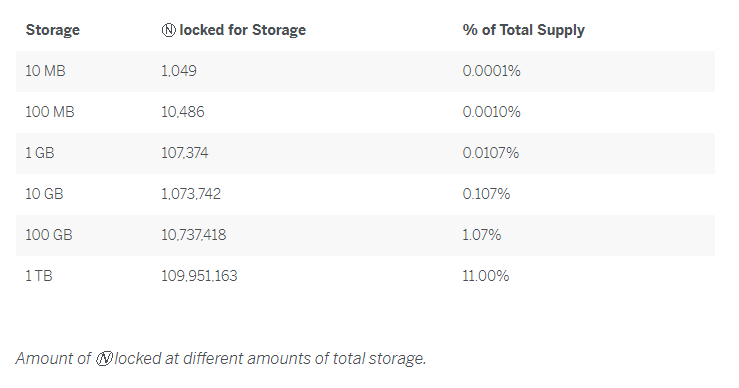
What does the functionality of the NEAR token tell us about demand side pressures? That as the network scales, the value of NEAR will increase. Not only is this because more validators will be required to lock up their NEAR to earn a seat on the network (as more seats become available), but also that more value will be transacted, stored, and exchanged on the platform using NEAR. All of these activities will require new parties, developers, enterprises, and entrepreneurs to join the network and participate in the ecosystem via the NEAR token.
In very simple terms: The value of NEAR is likely to increase as the network scales and grows. The value of NEAR is likely to decrease, if the network fails to garner adoption and does not grow.
Main Takeaways From Section 5:
The NEAR token has 4 distinct utilities: For (1) Network Usage Fees, as (2) a Medium of Exchange, (3) a Unit of Account, and (4) for maintaining network security.
A significant amount of NEAR tokens will be held: by Validators stalking their NEAR on the network, by developers for pre-paying fees for apps, and by different users and applications for storing data on the network.
All of these utilities suggest that as the Network grows, so will the value and demand for the token.
Conclusion:
At this point in time, it is clearly too early to tell whether NEAR will succeed or not. However as mentioned above, the context, team and funding, technical design, and token functionality inspire confidence in the future of the project. There are few other projects in the crypto-industry that are as thoughtful, well-funded, user and developer-friendly, and ambitious as NEAR. The team is professional and the project is well funded. It would be a huge mistake to think NEAR is only a short-term opportunity. Anyone who has spent time in crypto knows, from Bitcoin itself, to Ethereum to most recently ChainLink that high value projects take time to grow and develop. NEAR is no different.
About 4NTS Guild:
4NTS Guild is a rising NEAR Guild focused on connecting and communicating NEAR, its different projects, and the tremendous opportunity for entrepreneurs, contributors and other Guilds. Feel free to drop us a line at m@4nts.com.




